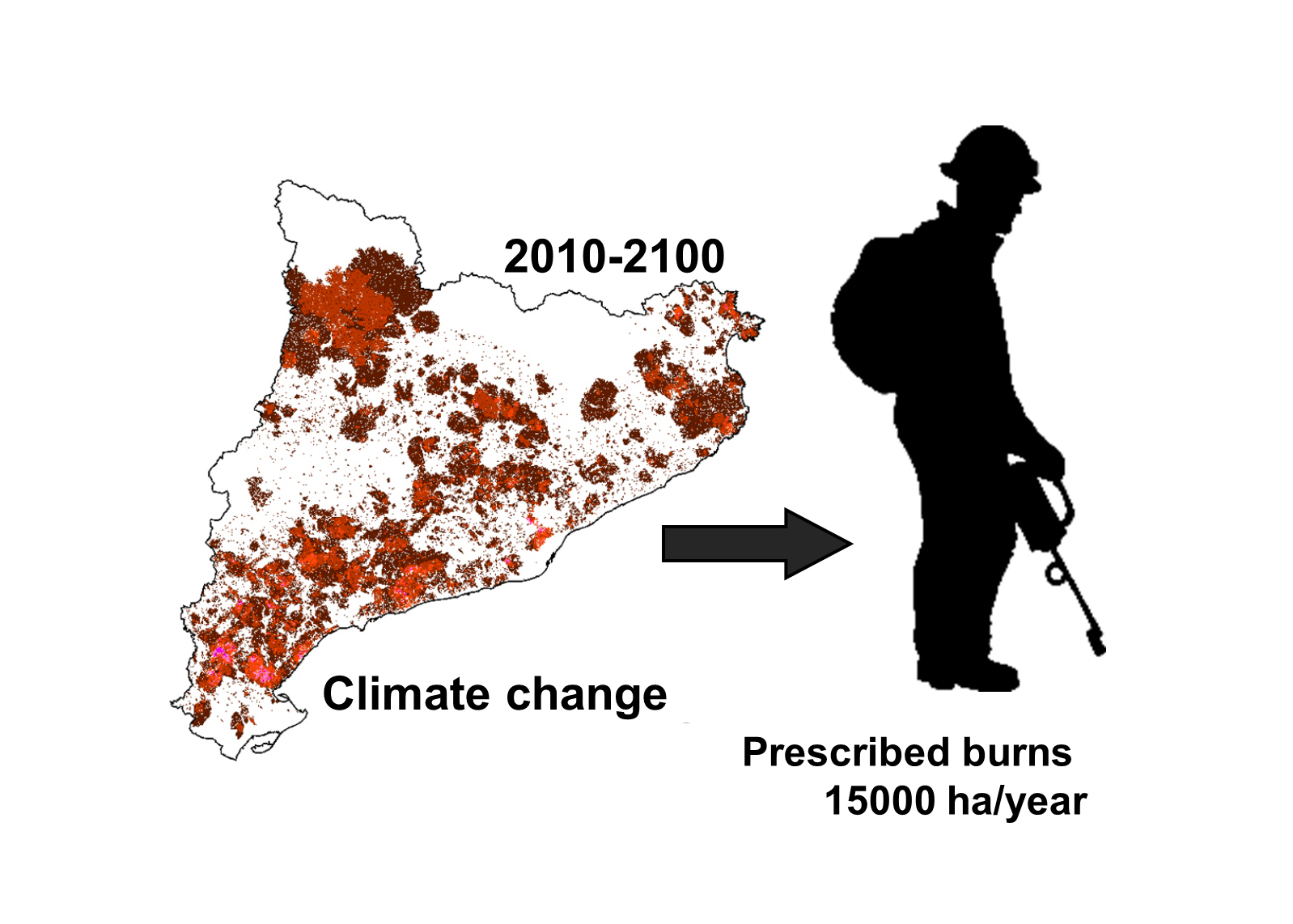New article: Adapting prescribed burns to future climate change in Mediterranean landscapes

A new article published in Science of the Total Environment evaluates fire management effects on fire regime under climate change. The authors found that prescribed burning reduce high-intensity fires associated with climate change and that adaptive prescribed burning gain in cost-efficiency compared to rigid strategies
Fire regimes are shifting or are expected to do so under global change. Current fire suppression is not able to control all wildfires, and its capability to do so might be compromised under harsher climate conditions. Alternative fire management strategies may allow to counteract predicted fire trends, but we lack quantitative tools to evaluate their potential effectiveness at the landscape scale. Here, we sought to quantify changes in fire regimes induced after the implementation of different fire management strategies. We developed and applied a new version of the model MEDFIRE in Catalonia (Mediterranean region of ~32,000 km2 in NE Spain). We first projected burnt area from 2016 to 2100 resulting from climate change under the Representative Concentration Pathway 8.5 scenario of HadGEM-CC model and under current fire suppression levels. We then evaluated the impacts of four fire management strategies: ‘Let it burn’, fixed effort of prescribed burning with two different spatial allocations, and adaptive prescribed burning dynamically adjusting efforts according to recent past fires. Results predicted the emergence of novel climates associated with similar barometric configurations to current conditions but with higher temperatures (i.e. hot wind events). These novel climates led to an increase in burnt area, which was partially counteracted by negative fire-vegetation feedbacks. All prescribed burning scenarios decreased the amount of high-intensity fires and extreme fire events. The ‘Let it burn’ strategy, although less costly, was not able to reduce the extent of high-intensity fires. The adaptive prescribed burning scenario resulted in the most cost-efficient strategy. Our results provide quantitative evidence of fire management effectiveness, and bring to light key insights that could guide the design of fire policies fit for future novel climate conditions. We propose adaptive landscape management focused on the reduction of fire negative impacts rather than on the elimination of this disturbance from the system.
https://www.sciencedirect.com/science/article/pii/S004896971931890X




